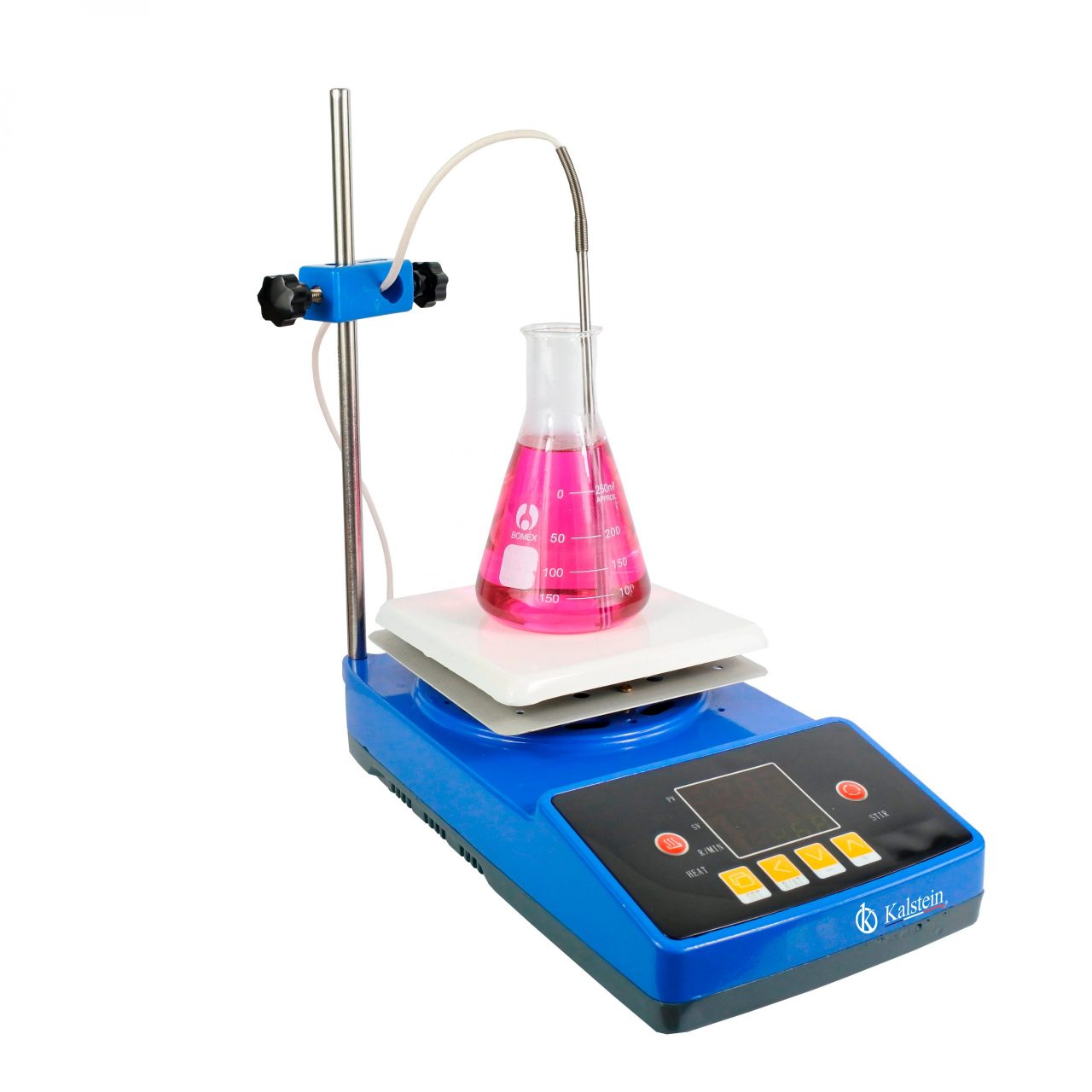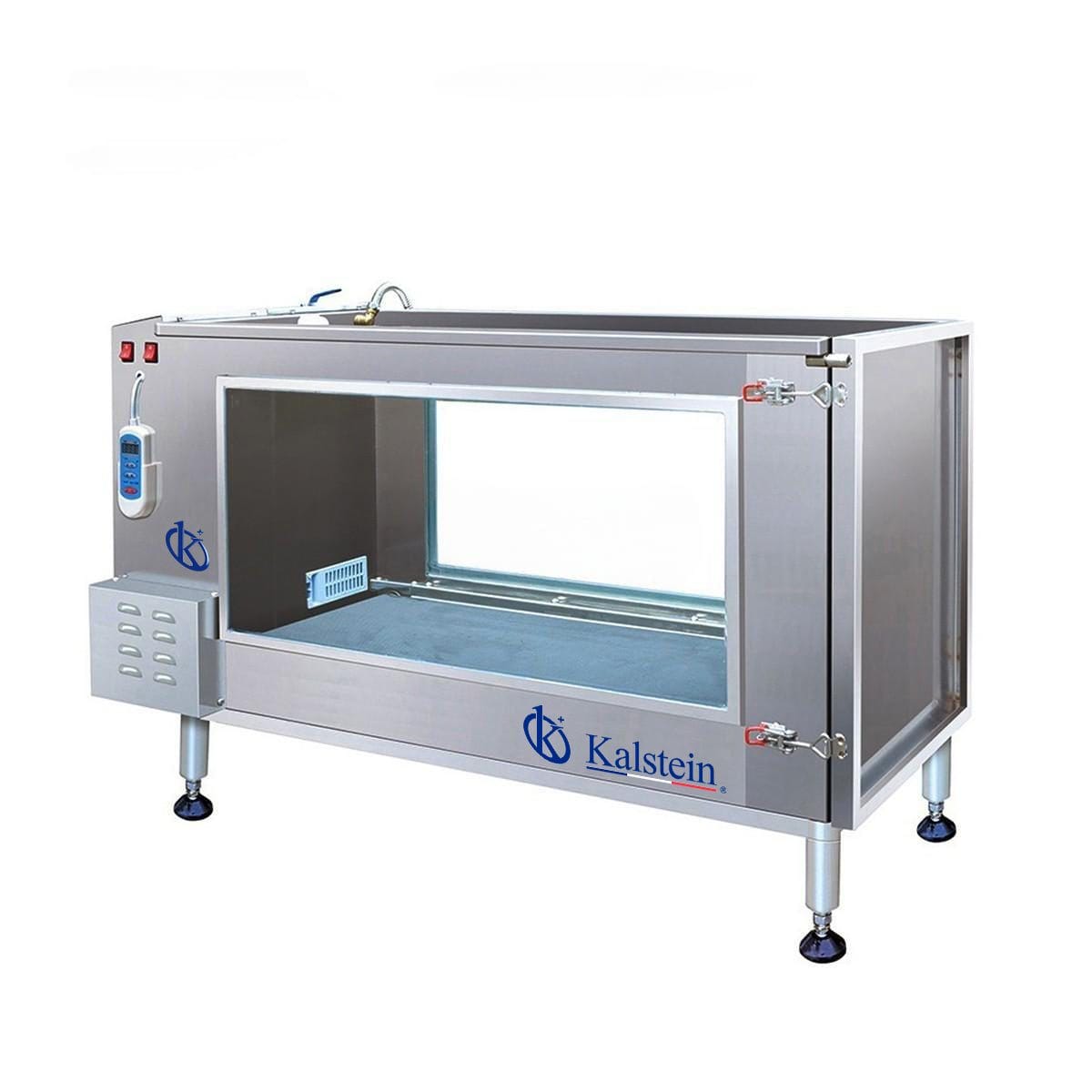In the laboratories, various procedures are carried out to achieve the objective of their studies, such as distillation, boiling and extraction processes. Several of certain processes consist of preparing chemicals or solutions with exact temperatures to achieve a certain reaction.
The heating plate, also known as a heating plate or heating plate is one of the devices used for this purpose.
What is the heating plate?
The Hot Plate is a portable benchtop laboratory instrument that has electrical heating elements resistant to corrosion and chemical and mechanical attacks. Useful for heating containers with liquids, glassware or the content inside them in a uniform and controlled way.
This instrument can be found in chemistry, biology and biochemistry laboratories, among its uses are:
- Drying of chemical analysis.
- Heat treatment, evaporation of liquids.
- Studies related to biochemistry and other compounds.
- Heating flasks and other glassware
- Some plates contain a magnetic stirrer that allows the heated liquid to be stirred automatically, this occurs when a small magnet or stir bar is inserted into it and is preferably used to create solutions or solutions.
Typically, the stirred hot plate has a flat surface on which the containers containing the fluids to be heated or stirred, or both, are placed. This surface is manufactured with materials that are characterized by being good thermal conductors such as aluminum [Al] or ceramic materials. Hot plates have also been developed that exclusively use infrared radiation sources to heat. The heating plate with stirrer has a heating element (an electrical resistance), a control system (on, off, temperature control stirring control and its respective motor). The motors used in this type of instrument are generally single-phase induction, which is called degraded pole. Its speed depends on the number of poles and the frequency of the supply voltage.
Heating plate features:
- Fast and uniform heating.
- Microprocessor control.
- Temperature of 35 ° C, up to 450 ° C.
- It has a thermostat capable of regulating the temperature.
- Durable and stable operation.
- Among the types of heating plates we have:
- Heating plate coupled to a stirrer.
- Ceramic heating plate.
- 1-position heating plate.
- 2-position heating plate.
- Infrared heating plate.
- Battery infrared heating plate.
To avoid accidents, it is necessary to comply with the instructions for use and maintenance of said equipment.
Precautions for using the hot plate
- Always connect the hot plate with stirrer to an electrical outlet in good condition that has a ground pole.
- Unplug the equipment before performing any routine maintenance.
- Avoid using the equipment in environments with the presence of combustible or flammable materials. Also avoid using the equipment in environments with corrosive vapors.
- Supervise carefully if it is required to heat substances with a low ignition point (Flash point). A fire or explosion could start if the vapors touch the heating surface at this temperature.
- Bear in mind that the surface of the equipment can remain hot for a long period, after the moment it has been switched off or unplugged.
- Avoid placing on the heating surface: metal sheets, materials with insulating properties y low melting point glass elements
- Avoid placing containers whose weight exceeds the capacity defined by the manufacturer.
How to properly use a hot plate with stirring?
- Firstly, introduce the reagents and the solvent into the indicated container.
- Add the magnetic core.
- Fix the preparation on the plate.
- Connect the appliance to the electrical current.
- Connect the agitator.
- Set the thermostat to the desired temperature.
- At the end of the process, disconnect the thermostat and then disconnect the agitator.
At Kalstein we are MANUFACTURERS and we offer you excellent quality heating plates at the best PRICES. That is why we invite you to visit our page, in its section of products available at: HERE




